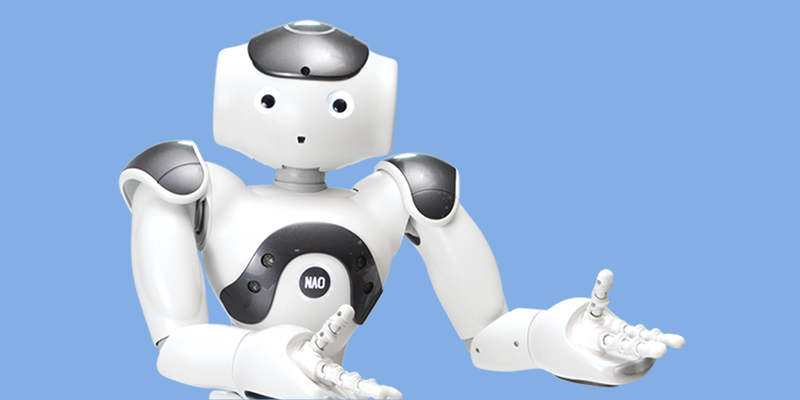
Audience
- Sentiment: Positive
- Political Group: Moderate
- Age Group: 18-34
- Gender: All
Overview
- Apple is exploring robotics, including humanoid and non-humanoid designs.
- The company is in early research phases and may start mass production by 2028.
- There are challenges ahead such as pricing and reliability, but the potential for smart home integration is significant.
Apple Ventures into Robotics Development: A New Frontier
Apple. When you hear that name, what comes to mind? Maybe it’s sleek iPhones, powerful MacBooks, or the cool design of the Apple Watch. But did you know that Apple is stepping into the world of robotics? Recently, a leading tech analyst named Ming-Chi Kuo shared some intriguing insights about Apple’s explorations in this area. It’s a bold move that could change how we think about technology in our daily lives. So, let’s dive deeper into what Apple is up to!
What’s on the Table?
According to Kuo, Apple is investigating various types of robots—some that look like humans (called humanoid robots) and others that don’t (non-humanoid robots). This exploration isn’t just a casual curiosity; it suggests that Apple is serious about incorporating robots into our everyday experiences. But what does this actually mean for you and me? Well, Apple has been busy thinking about how humans can interact with robots in a way that feels natural and useful. They even referenced a design that resembles a classic Pixar-style lamp, which many of you might recognize from the opening of Pixar movies. This lamp became a symbol of playful creativity and innovation, and it’s exciting to think that such fun designs could lead to real robots in the future!
The Research Phase
Right now, it appears that Apple is still in the early stages of their robotics research. Kuo described it as “early proof-of-concept.” This means they’re testing out ideas and seeing what works before they invest heavily in developing actual products. If you think back to their Apple Car project, which has been highly secretive and similarly experimental, you can see a pattern. Apple’s approach to innovation often involves exploring ideas quietly until they’re ready to dazzle the public with something truly impressive. Kuo even predicts that we might start seeing mass production of these robots by 2028, which sounds far away but is just around the corner in the tech world!
This research phase is a critical time for Apple, as they need to get everything right before unveiling their robotics to the public. Imagine a household robot that could assist you with your homework, tidy up your room, or even help with cooking! The potential is enormous, and during this stage, Apple is focusing heavily on how users perceive these robots. They want to ensure that the robots are not only functional but also appealing and easy to interact with.
A Shift in Strategy
One of the interesting aspects of Apple’s dive into robotics is their decision to share some of their research. Usually, Apple likes to keep things under wraps, but it seems they’re being more transparent this time around. Why? Well, the tech industry is facing a massive struggle in hiring top engineers, and by being open about their projects, Apple might attract more talent to their company. This is a smart move because the more brilliant minds they have working on these robots, the better the end product will be.
Designing these robots isn’t just about making them look nice; it’s about figuring out what kinds of tasks they will perform and how people will use them. Apple’s research seems to suggest that they’re considering different designs that might not focus strictly on humanoid features. This opens up a whole new world of possibilities. Would you want a robot that perfectly looks like a person, or would it be better as a friendly, quirky creature that’s easy to distinguish from humans?
Expanding Smart Home Ecosystems
You might have heard the term “smart home.” This refers to homes equipped with devices that can communicate with each other and make your life easier. Think of smart lights you can control from your phone or speakers that can play your favorite music with just a voice command. Apple’s robotics research could play a significant role in this space. According to Kuo, they’re exploring both simple and complex systems. This means that we might see a range of robotic functionalities that could integrate seamlessly with our homes.
Imagine waking up in the morning to a little robot that starts brewing your coffee or one that can remind you to grab your homework before you leave for school. The idea is to create a connected environment where a variety of smart tools can enhance our daily routines.
Facing Challenges Ahead
Of course, everything isn’t all sunshine and rainbows. Like any new technology, especially high-tech robots, there are challenges Apple will need to navigate. Pricing is one big concern. People want innovative products, but they also want them to be affordable. Recently, Apple released the Vision Pro headset at a high price point, which left many potential customers feeling hesitant. If robots end up being too expensive, people might shy away from embracing this technology altogether.
Reliability is another significant challenge. No one wants a robot that can’t perform its functions properly or breaks down easily. Apple has a reputation for creating high-quality products, and they’ll need to ensure their robots are no exception. They’ve had their share of missteps in the past with tech products and projects, so a cautious approach is wise.
Looking Forward
As Apple continues to explore robotics, it’s exciting to think about what our future could look like. Will we have personal assistants that can help us complete tasks, learn new skills, or even play games with us? It’s a fascinating thought, and as technology advances, the imagination is the only limit. Apple’s entry into this field promises to be a game-changer, similar to how the iPhone transformed the way we communicate and access information.
Now, dear reader, as we look to the future of technology and robotics, what do you think about this exciting development? Would you welcome a robot into your home? What tasks would you want it to do for you? I’d love to hear your thoughts! Please share your ideas in the comments below!






